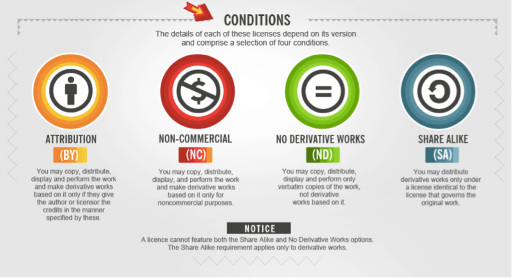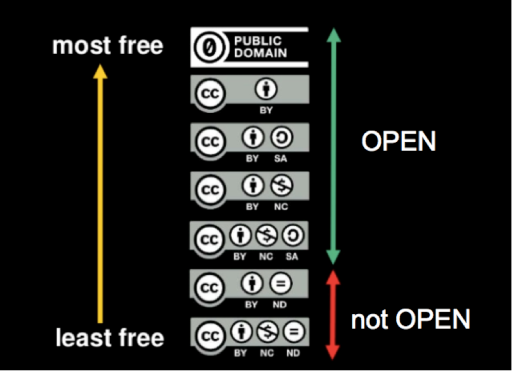About Creative Commons licences
It is common enough to assume that because something is online, it is also free to use. But is it, really? Do you normally ask the person who uploaded a resource to the web whether you can use that in your presentation, in your report…? Most likely you don't. That’s what Creative Commons licenses [Tip: hold Ctrl and click a link to open it in a new tab. (Hide tip)] are there for: they let you know exactly how authors would like you to use a resource while they retain copyright. The following image, adapted from How to Attribute Creative Commons Photos by FOTER explains what each of the licenses allows you to do:

You can view a larger image in a new tab here.
These licenses can be combined. For example, the image reproduced right above this paragraph has been released under a CC BY-SA license, which means that it can be reused in this course as long as it is attributed and shared under the same terms. The author has not added any restrictions with regard to adapting the resource (note that we have cropped it from the original) or using it for commercial purposes.
What is important for you to understand is that only resources allowing for adaptation are actually open. See the slide below, created by Paul Stacey: a resource with a No-Derivatives (CC-ND) license stops you from making any changes to it, therefore it is not open!

Remix and the essential elements of digital literacies
